The Ascendant constellation is a winter constellation that is most visible in December and January, but can also be seen in the east during the fall season. It ranks 21st in terms of size among all 88 constellations, so there are interesting celestial objects to observe, although they may not be as breathtaking as those in Orion or Taurus, for example.
The constellation got its name from the mythical figure Erichthonius, who was credited with inventing the first two-wheeled chariot. As a reward for his ingenuity, Zeus placed him in the sky. Interestingly, this invention played a crucial role in helping Erichthonius win a war and become the king of Athens.
The position of the constellation Ascendant in the celestial sphere
Above the constellations Orion and Gemini, and to the left of Taurus with the prominent Aldebaran, lies the constellation Ascendant. Its distinctive pentagonal pattern of stars makes it easily recognizable. Among these stars, Capella stands out as the brightest, shining brilliantly at 0.1m and occupying the upper corner of the constellation Ascendant.

The Ascendant constellation can be found in the night sky.
Ascendant is home to several interesting stars and a handful of objects listed in the Messier catalog, making it a great target for novice stargazers.
Stars in the Ascendant Constellation
There are some interesting stars in this constellation. While they may appear similar to others, it is still worthwhile to locate them in the night sky and observe them for personal growth.
Capella: The Brightest Star in the Ascendant Constellation
In the past, approximately 210,000 to 160,000 years ago, Capella shone as the brightest star in the sky, although only dinosaurs had the privilege of witnessing its brilliance. 240,000 years ago, this star was at its closest proximity to Earth, a mere 28 light-years away. However, its distance has since significantly increased.
Currently, Capella is situated 42 light-years away and is actually a binary star. However, its components are positioned too closely for us to observe them using a telescope, as they are only about 2/3 of the distance between the Earth and the Sun – approximately 100 million kilometers.


The Capella system consists of two giant stars, with one being 77 times brighter than the Sun and the other 78 times brighter. The first star, known as Component A, is a red giant that has already exhausted its hydrogen fuel and is now undergoing helium burning. The second star, Component B, is also on a similar evolutionary path, having depleted its hydrogen but not yet initiating helium reactions. Both stars are approximately 2.5 times more massive than the Sun and revolve around their common center of mass every 104 days.
Due to their close proximity, these two giants may eventually expand to the point where their outer layers touch, although this event is not expected to occur in the near future.

The relative sizes of the components of the Capella system and the Sun.
Beta Ascendant – Menkalinan
This celestial body has its own unique designation, Menkalinan, and it is a triple star. Positioned at the heart of the system are a pair of subgiants, each boasting a luminosity that is 48 times greater than that of the Sun. These stars have exhausted their supply of hydrogen and have commenced expansion. They are situated in close proximity, a mere 0.08 astronomical units apart, which is 5 times closer than the distance between the Sun and Mercury.

Menkalinan, also known as Beta Ascendant, is located in a specific constellation.
Due to their close proximity, the gravitational pull between the stars is so strong that they have an oval shape and face each other, instead of being spherical. This phenomenon is similar to what happens in the Capella system when the stars come into contact with each other.
Menkalinan’s position in space is such that every 3.96 days, one star eclipses the other, causing a decrease in total brightness by 0.1m. This makes Menkalinan an eclipse-variable star.
In addition to the pair of large stars, there is also a red dwarf that rotates around them at a distance of 330 a.u. This red dwarf is not visible to the naked eye and requires a telescope to be observed.
Epsilon of Ascendant – Almaaz
The star ε of Ascendant is known by its unique name – Almaaz. Situated approximately 2000 light years away, the mere fact that it is visible to the naked eye indicates its exceptional characteristics.
Almaaz is classified as an eclipsing variable star, composed of two distinct components. The primary component is a luminous white supergiant, which pulsates with a period of 66 days. This star surpasses the Sun in size by 100-200 times and is 40-60 thousand times brighter!
However, the secondary component presents a perplexing enigma, the true nature of which remained elusive for an extended period. Some speculated that it might be a black hole or an enormous translucent star.
The reality is that eclipses occur approximately every 27 years when the luminosity of Almaaz diminishes from 2.92m to 3.83m, and they can last for a duration of 640 to 730 days. This implies that the second component is situated at a significant distance from the first. In order to outshine a supergiant from such a vast distance over such an extended period of time, the second component would need to possess extraordinary size.
Presently, there exists a hypothesis that suggests the second component within the Ascendant’s epsilon system is actually a binary system surrounded by a dust disk. It is postulated that during the passage of this expansive nebula in front of the supergiant, a reduction in its brightness occurs, which we observe once every 27 years.

This might be the appearance of the second component of the Epsilon Ascendant system.
Epsilon Ascendant has garnered significant attention from astronomers. Not everything is as straightforward as it may appear. The true nature of the system’s second component remains elusive due to its challenging observability. Numerous hypotheses have been proposed in recent times, but none have been substantiated. The theory of a dust disk still stands as the most plausible, yet further research is required. When viewing this star in the night sky, bear in mind that it is one of the most enigmatic celestial bodies, harboring countless enigmas.
The star ζ of Ascendant is known as Hedus (or Sadatoni in Arabic). It is also a remarkable star, or rather a binary system that appears as an eclipsing variable. It is located at a considerable distance from us – 784 light-years away.
The primary component in this system is a bright orange giant, which is 148 times larger than the Sun, nearly 6 times more massive, and 4800 times brighter. The second star is a hot blue-white star, just 4.8 times more massive than the Sun and 4.5 times larger, but it is also 1000 times brighter than our own star.
The orbital period of this pair is 2.66 years. While this system may not possess the intrigue of Epsilon of Ascendant, it is still a highly impressive duo of stars. This system is a scorching hot place.
Star clusters in the constellation of Ascendant
In the constellation of Ascendant, there are three star clusters – M36, M37, and M38. These clusters are positioned in close proximity to each other, forming a nearly triple cluster. Among these clusters, the brightest one is M37.

The three clusters are situated approximately at the same distance from us – 4400 light years, albeit M38 is slightly nearer. They primarily consist of hot white stars.
Observing all three clusters is not a challenging task, even with a small amateur telescope, and they can be easily located using binoculars.
It is a query that can rightly be considered a classic because despite its apparentness, numerous individuals find it arduous. difficulty. I once posed this question to a friend, and I observed him struggle to think of any renowned stars. What came as a surprise to him was when I clarified which star is the nearest to our planet.
What is the closest star to Earth called?
It is quite clear that the closest star to Earth is the sun, which happens to be the only star in our solar system. The distance between the Earth and the sun is approximately 150 million kilometers. It’s definitely a significant distance 🙁

Additional celestial bodies
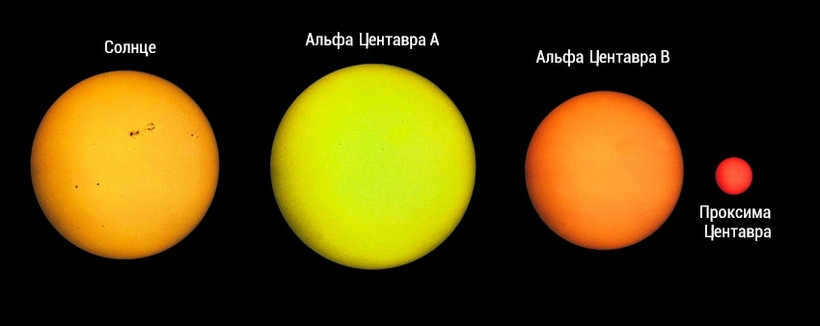
What is the method for measuring the distance to stars?
One way to achieve this is by utilizing the technique of parallax. An interesting experiment can be performed to demonstrate this. To conduct the experiment, simply make a fist, extend your arm, and extend your thumb. You can select any distant object as your target and point your thumb towards it. By alternately closing one eye and then the other, you will observe that your finger appears either directly in line with the target or slightly off to the side. This is the fundamental principle behind this method.
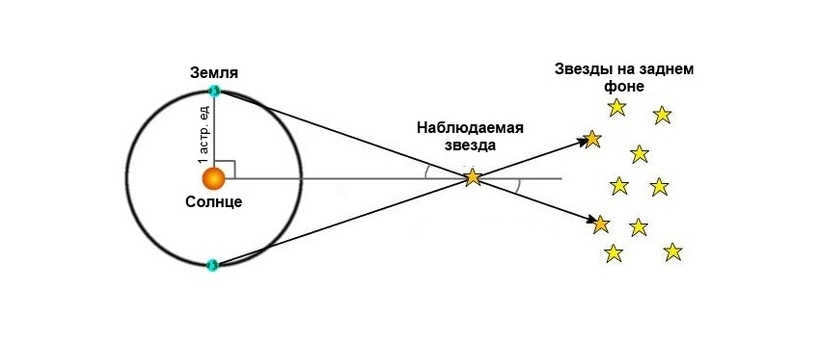
When determining the proximity of a celestial object, you can calculate the angular distance between the object and a specific point of reference during a specific phase of its orbit. This method is applicable to stars that are within a distance of 100 light years from our planet.
The nearest stars
These are the stars and star systems that are closest to our planet:
- Alpha Centauri – located 4.35 light-years away;
- Bernard’s Star – situated at a distance of 5.9 light years;
- Wolf 359 – positioned 7.8 light-years away;
- Laland 21186 – found 8.3 light-years away;
- Sirius – located 8.6 light-years away.
In total, within a range of 14 light-years, we can count a total of 32 star systems that can be considered our “neighbors”.

A comparison of the sizes of four stars can be seen in the image above. From left to right, they are: the Sun, Alpha Centauri A, Alpha Centauri B, and Proxima.
In the field of classical astronomy, there exists a theory that suggests Proxima is the third component of the Alpha Centauri system. This theory posits that Proxima is located at a significant distance from the main stars and completes a full orbit around them once every half a million Earth years. However, recent scientific developments have cast doubt on this hypothesis. New theories are emerging, one of which proposes that Proxima is actually an independent star separate from the Alpha Centauri system.
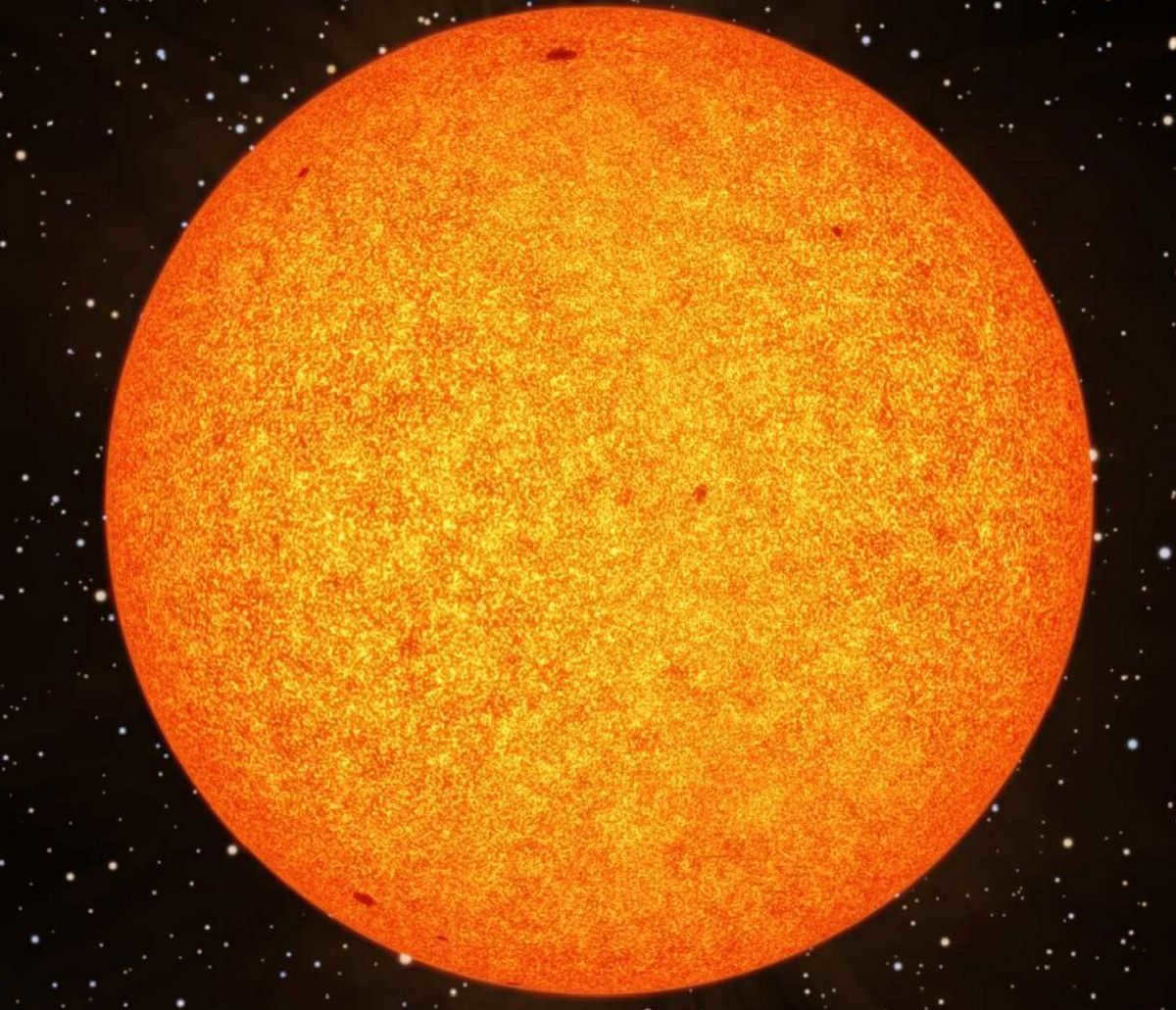
The star called Proxima is closer to us than any other star in the Alpha Centauri system. It is the closest star to Earth after the Sun. Proxima is located 4.14 light-years away from our planet, which is about 270,000 times the distance between the Sun and Earth. Red dwarfs like Proxima are the most common type of stars in the Galaxy. They are small and emit a faint amount of energy, making them difficult to see from a great distance. It is interesting to note that Proxima is 7 times smaller than the Sun and 150 times larger than Jupiter.
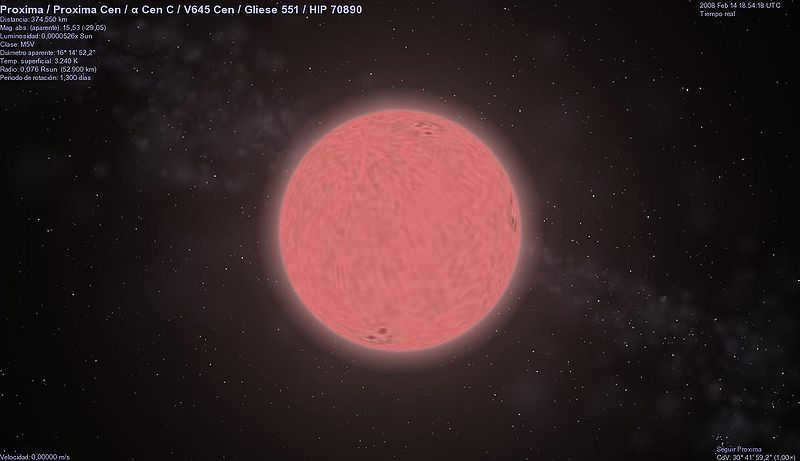
A computerized representation of Proxima, a star located closer to our planet, created using the Celestia software.
For ages, humans have been fixated on the vast expanse of the sky, where they have witnessed countless stars illuminating the darkness. These celestial bodies have captivated their minds and prompted contemplation about the nature of the universe. As time progressed, knowledge surrounding these stars grew and was organized. It eventually became evident that stars were not merely specks of light, but rather substantial entities in space, with immense size and significance. This realization sparked a desire among our ancestors to venture into space and explore these distant stars. However, before embarking on such a journey, they needed to determine the exact distance to these celestial bodies.
The distinction between a star and a planet
Here lies the crucial contrast between the two:
- Dimensions. Typically, a star boasts a much greater size compared to ordinary planets.
- Mass. A star possesses a significantly larger mass than a planet.
- Chemical makeup. Stars consist predominantly of light elements, whereas planets comprise both light and heavy elements.
- Temperature. Planets exhibit a considerably lower temperature. This discrepancy accounts for the dissimilarity in radiation spectra: planetary radiation primarily manifests as infrared, while stellar radiation encompasses ultraviolet, X-rays, and gamma rays.
- Brightness and luminosity intensity. Stars emit light on their own, whereas planets solely reflect it.
- Chemical reactions do not occur in stellar bodies, but instead, thermonuclear and nuclear reactions take place throughout their entire volume. On the other hand, planetary bodies only have the possibility of nuclear reactions, and these can only occur in the center of the nucleus.
- Planetary bodies follow elliptical trajectories as they move around stars and can have satellites. In contrast, stellar bodies do not rotate and do not have satellites.
- The Sun, which belongs to the class of yellow stars, is actually a star itself. It has an average temperature for its type, not too high and not too low.
If we’re discussing the celestial bodies within our solar system, undoubtedly, the Sun takes the spotlight. It holds the title of being the nearest star to us and serves as the central force in our system. Without it, life as we know it would cease to exist, as our planet itself owes its existence to this radiant star. For this very reason, it deserves our utmost attention.
Similar to its stellar counterparts, the Sun primarily consists of helium and hydrogen. The latter undergoes cyclic transformations, ultimately converting into the former. Through the occurrence of thermonuclear reactions, heavier elements are synthesized. As stars age, the accumulation of these elements intensifies. Our Sun, being approximately 5 billion years old, falls into the category of being a mature star. In terms of weight, the closest star to us measures an astounding 595800000000000000000000000000000000000000000000000000 Earth tons (for the sake of convenience, alternate units are employed, but this number is evidently the most fitting representation).
The Sun has a diameter of 1,392,000 kilometers. Its surface temperature can reach a scorching 1,500,000 degrees Celsius. The temperature increases as you move towards the center of the Sun. The Sun’s atmosphere consists of three main layers:
When discussing the closest star beyond our solar system, we refer to the diminutive Proxima Centauri.
The most luminous stars beyond our solar system
Proxima Centauri.
This celestial body is part of a triple star system situated approximately four light-years away from our own solar system. In scientific terms, a light-year is defined as the distance light travels in one year, which is equivalent to about 9.46 trillion kilometers. The name “Proxima Centauri” itself is derived from Latin and translates to “nearest Centauri,” indicating that even ancient civilizations recognized its proximity and distinctive characteristics.
Although a distance of four light-years may seem insignificant within the vast expanse of the Universe, it remains a considerable distance for human beings. Traveling to the boundaries of Proxima Centauri would require more than a single lifetime, making it an ambitious endeavor beyond our current technological capabilities.
It can be difficult to spot among the stars, but can be detected in the sky only with the help of a telescope. Its brightness is about 150 times fainter than the Sun. It is also smaller in size and has a surface temperature that is twice as low. Scientists classify this celestial object as a brown dwarf and believe that the chances of finding planets near it are slim. Therefore, there is no reason to venture there.
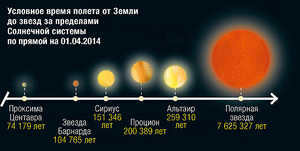
Alpha Centauri
Meanwhile, in close proximity to us, there is a fascinating triple system known as Alpha Centauri, which is relatively rare in the vast Universe. What sets these celestial objects apart is the intricate dance of the stars as they orbit each other, occasionally resulting in one star consuming its neighboring star.
This video will provide you with insights into the distances between these stars.
Exploring the Depths of Outer Space
The Andromeda Nebula holds the record for being the most remote object in the known Universe that can be observed without the aid of specialized optical instruments. With its luminosity equivalent to approximately a quarter magnitude, this celestial wonder captivates the imagination. Astronomers estimate that the farthest star from Earth within this galaxy resides a staggering 2 million light years away. Contemplating such an immense distance is truly mind-boggling. When we gaze upon this star, we are essentially peering into the cosmic past, witnessing events that transpired 2 million years ago!
The dwarf galaxy located in the Sagittarius constellation is the nearest galaxy to us. It is so close that it gets engulfed by the Milky Way. However, it is important to mention that reaching it would require traveling a distance of 80,000 light years. The Magellanic Cloud, on the other hand, is situated approximately 170 parsecs away from us and is not significant in comparison.
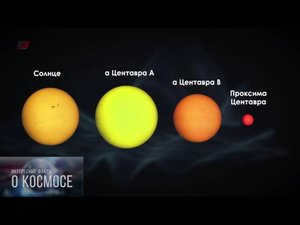
NASA reports that there are an additional 45 stars located 17 parsecs away from our Sun. The total number of stars in the universe exceeds 200 billion stars. However, many of these stars are extremely faint and can only be detected with specialized equipment. It is possible that with advancements in technology, scientists will discover stars that are even closer to us.
You will gain fascinating knowledge about the Sun from this video.
Although it may appear mundane, the Sun is actually the nearest star to Earth. Therefore, it is not entirely accurate to phrase the question in this way. Our yellow dwarf is just as impressive as other stars and is, in fact, one of the most common types of stars in the Galaxy. However, we are not discussing our own celestial body, so let us explore which star is the closest to the Sun.
Many individuals are aware that Alpha Centauri is the closest star to us. It has been the subject of numerous works of fiction and is frequently referred to as our neighbor. While this is true, it is not as straightforward as it may appear.
Some meticulous individuals refer to Alpha Centauri as Alpha Centauri. Although this constellation is formally known as Centaurus in Latin, which translates to Centaurus, it is generally referred to as Alpha Centauri. This is the case in Russian-language literature, reference books, movies, and overall everywhere. While pedants may argue about Centaurus-Centauri, this argument is meaningless.
Alpha Centauri is the closest star to Earth, located 4.37 light years away. This means that it takes light 4.37 years to travel the distance between us, traveling at a speed of 300,000 kilometers per second. Therefore, proximity is relative and the distance is vast. It is unlikely that humans will ever be able to travel such a great distance, if they are capable of doing so at all.
Alpha Centauri is not just an ordinary star. It is actually a binary star system consisting of two stars, which are designated as A and B. These stars revolve around a shared center of mass and complete one orbit in approximately 80 years. As they move, one star will appear closer to us than the other. Both stars in this system are similar to our Sun, although the A component is slightly brighter while the B component is slightly fainter.
When observed with the naked eye, both stars appear as a single entity and have a combined brightness of -0.27m, making Alpha Centauri the third brightest star in the sky as seen from Earth.
However, the situation is even more complex than it seems. While Alpha Centauri A and B are commonly referred to as Alpha Centauri, they are not currently the closest stars to us. There is actually a third star in this system known as Proxima Centauri.
Proxima Centauri: Earth’s Nearest Star
Proxima Centauri, a red dwarf, holds the distinction of being the closest star to Earth. While it is part of the Alpha Centauri triple star system, it is situated a considerable distance away from the system’s two larger main components – a staggering 15,000 astronomical units or 0.21 light-years. Interestingly, this distance is only 20 times less than the span between Proxima Centauri and our planet.
Due to its significant distance from the center of the system, Proxima Centauri completes an orbit every 500,000 years. Currently, it occupies the orbital segment in front of Alpha Centauri, solidifying its status as Earth’s nearest star for the foreseeable future. However, as it progresses along its orbit, Proxima Centauri will eventually move to a remote portion, making way for Alpha Centauri – specifically, its A and B components – to take the title of nearest star.
The Alpha Centauri triple system includes Proxima Centauri, a red dwarf, which is the closest star to Earth.
Proxima Centauri is located 2.2 degrees away from Alpha Centauri in the sky, which is equivalent to 4 lunar disks. However, it cannot be seen with the naked eye due to its low brightness of 11 m. Therefore, the only way to observe this closest star is through a telescope, even a small one.
Despite being our nearest neighbor, Proxima Centauri is very faint. It is 7 times smaller and lighter than the Sun. Even if it were observed directly from one of the planets in the Alpha Centauri system (assuming there are any), Proxima Centauri would still appear as a dim 5th magnitude star in the sky.
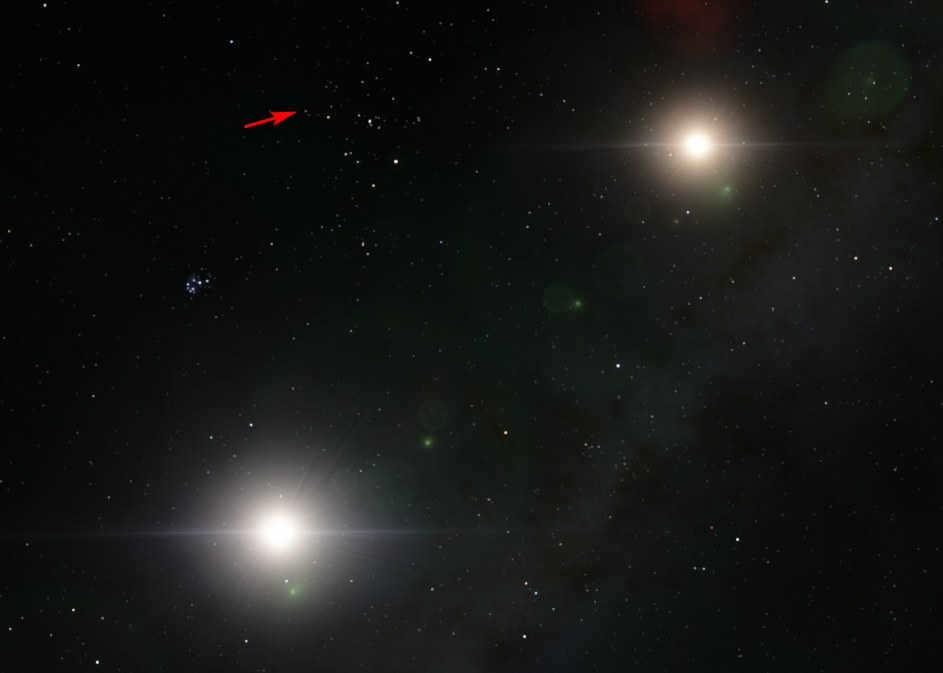
If we were in close proximity to the primary stars of Alpha Centauri, Proxima would be visible as a faint celestial body (indicated by the red arrow).
In addition, it is worth mentioning that Proxima Centauri has a planet situated in the habitable zone. The existence of this planet was confirmed by the European Southern Observatory in 2016. This exoplanet is relatively small in size and bears resemblance to Earth. It orbits the star at a distance of approximately 0.5 astronomical units (a.u.).
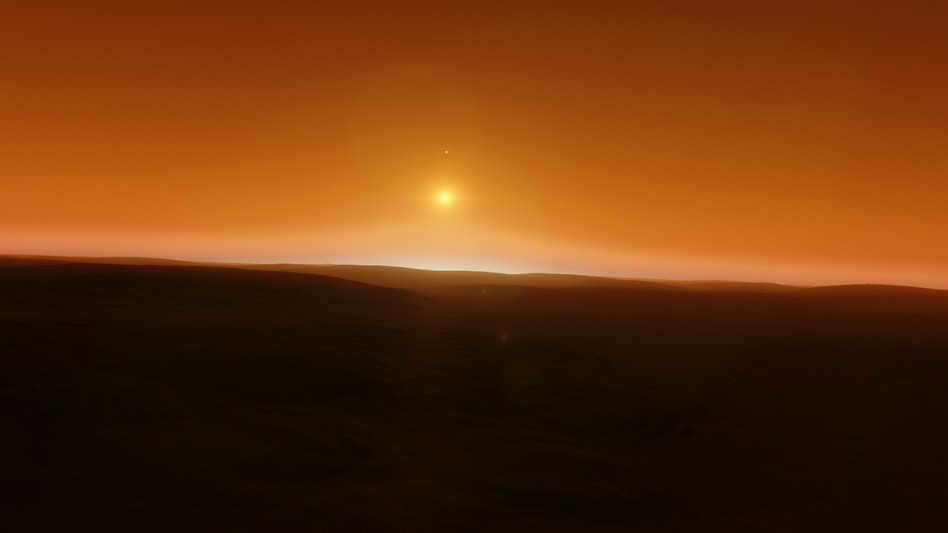
Proxima Centauri is the name of the star that is located closest to Earth. It is possible that this is what it looks like in the sky of one of its planets. The image is taken from the Space Engine universe simulator.
However, the question of whether life could exist there is highly debated. This is because Proxima Centauri is an unstable red dwarf star that experiences periodic flares, causing a significant increase in its radiation, including in the X-ray spectrum. If there are oceans on its planets, life could potentially be protected there, and it is possible that life has adapted to survive in such conditions over the course of evolution. The star itself is approximately 5 billion years old, so anything is possible.
Furthermore, a groundbreaking discovery was made in 2019 when scientists reported the detection of a previously unknown planet in close proximity to Proxima Centauri, located approximately 1.5 astronomical units away from the star. Remarkably, this newly found celestial body boasts a mass at least six times greater than that of Earth and endures an incredibly frigid temperature of a mere 39 K. However, it is important to note that further investigation is necessary to confirm the existence of this enigmatic planet.
Additionally, there is speculation that Proxima Centauri harbors an asteroid belt. Although preliminary data suggests the presence of such a belt, it remains imperative to conduct thorough research and analysis in order to fully comprehend its composition and characteristics.

The Sun’s closest stars are our next-door neighbors.
The nearest stars to Earth in the past and future
Like the solar system itself, the movement of the stars causes their relative positions to change, resulting in different neighbors. Proxima Centauri and even the entire Alpha Centauri system are only temporary neighbors. Over time, they will drift apart, and other stars will take their place as the closest.
For the past 32,000 years, Proxima has held the title of the nearest star to us. However, in another 33,000 years, the closest star will be Ross 248, located in the Andromeda constellation. Currently, it is quite distant, at a distance of 10.3 light-years, which is twice as far as Proxima Centauri.
The Sun, the foundation of our solar system, stands as the nearest celestial body to Earth, distinguishing itself from all other entities by its visibility during daylight hours. During the night, however, the vast expanse of the cosmos reveals countless other luminous objects. The sheer quantity of stars that populate the Universe defies calculation. Nevertheless, scientists have designated and compiled a list of the closest celestial bodies within a 16-light-year radius. This list encompasses 57 star systems, some of which consist of not just single stars, but double and triple star formations, bringing the total number of celestial bodies to 64. Additionally, the list includes 13 brown dwarfs, which noticeably lag behind other objects in terms of mass.
There are only 7 stars from the given list that can be considered without the need for optical amplification. These stars are Alpha Centauri, Epsilon Eridanus, Epsilon Indian, Tau Kita, and 61 Swan. Their apparent magnitudes range from 1.43 to 6.03. The majority of these stars belong to the red spectral class M and have temperatures ranging from 2600-3800 K. The two hot stars in the list are Sirius A, which belongs to the white spectral class A and has a temperature of 9940 K, and Procyon A, which belongs to the yellow-white spectral class F and has a temperature of 6650 K. Additionally, the list includes brown dwarfs belonging to the spectral classes L, T, and Y. Finally, there are also 4 white dwarfs of class D, which are relatively rare objects in the visible sector of the Galaxy.
Distinctive Features of Alpha Centauri – Earth’s Nearest Stellar System
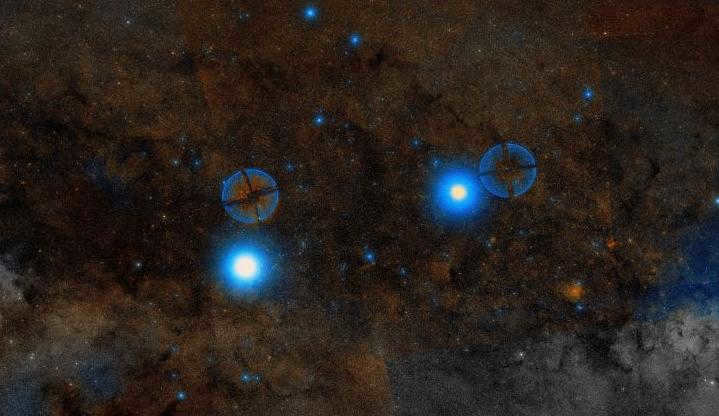
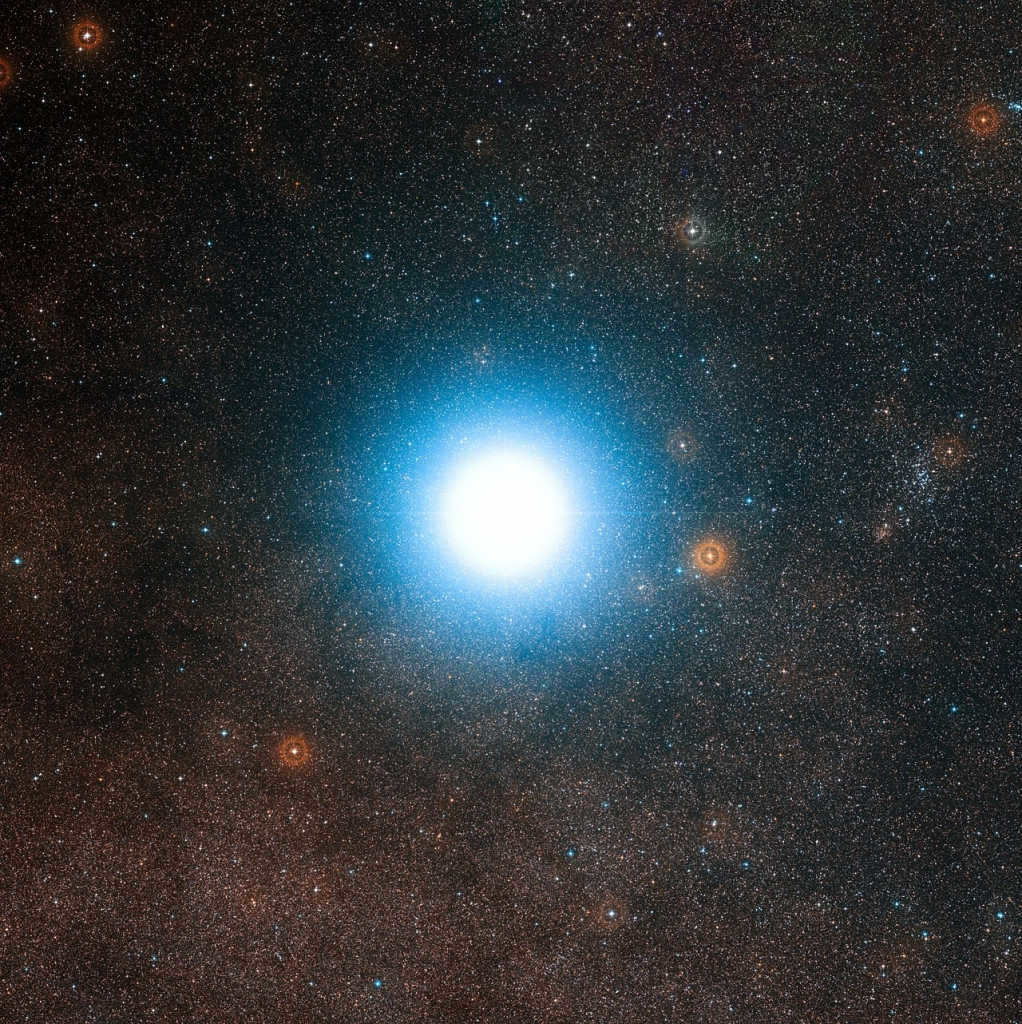
The other two parts of the system – Alpha Centauri A and Alpha Centauri B – have a close interaction with each other. When observed from Earth, they appear as a single star. The distance to the system is 4.36 light-years. These objects fall into the G and K spectral classes, making them yellow and orange dwarfs. They share similarities with the Sun in terms of characteristics and temperature, but they are older, with an age of approximately 6 billion years. Alpha Centauri A is larger than its companion, with a mass of 1.1 times that of the Sun and a diameter of 1.2 times that of the Sun. On the other hand, Alpha Centauri B has a mass of 0.9 times that of the Sun and a diameter of 0.86 times that of the Sun. These stars orbit each other in an elliptical trajectory, inclined at an angle of 79.2 degrees, with a period of 79.9 years.
Exoplanets of Alpha Centauri
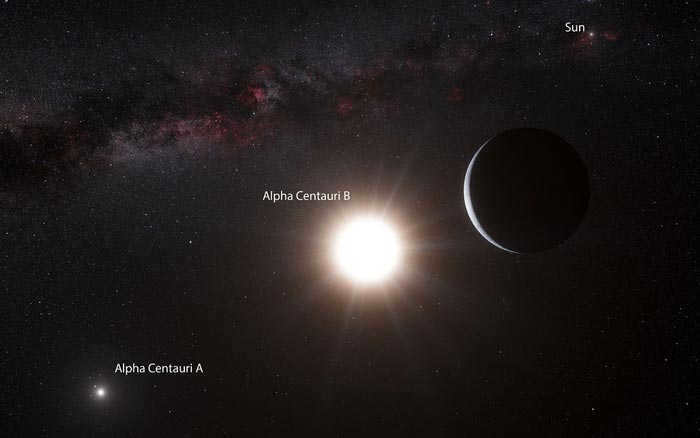
Additional research and computer simulations provide optimism for the existence of a second, larger, and more distant planet near Alpha Centauri B. This hypothetical planet has a rotation period of 20.4 days. The calculations suggest that it would experience an impact from Centauri A approximately once every 70 years. If this planet has oceans, its barren surface would be significantly more susceptible to damage.
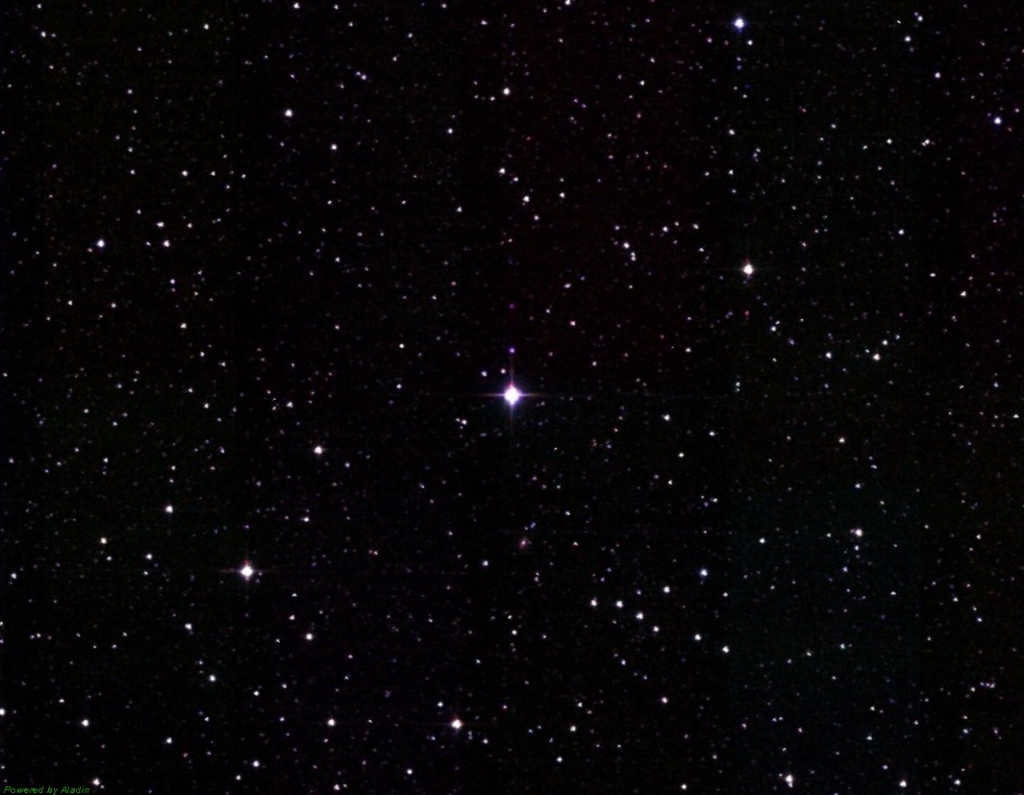
The star known as E. Barnard’s star, which was discovered by E. Barnard in 1916 and named in his honor, belongs to the spectral class M. It is classified as a red dwarf and is located in the equatorial constellation of Serpens. The star is situated at a distance of 5.96 light-years from Earth. In comparison to our Sun, this small celestial body is significantly smaller, with a mass and diameter only reaching 0.17 of the Sun’s values. Despite not being visible to the naked eye, it is the fourth farthest star from us. E. Barnard’s star, also known as the “Flying Barnard,” is renowned for its swift motion, which is directed towards our Sun. In the future, it will approach closer to us than Proxima Centauri. Its speed is extraordinary, covering a distance of 10.36 angular seconds in a year.
The existence of planets
For many years, a team of researchers in California has been dedicated to the search for planets around Barnard’s star. Despite their continued efforts, no concrete evidence of the presence of these planets has been found.
Luman 16.
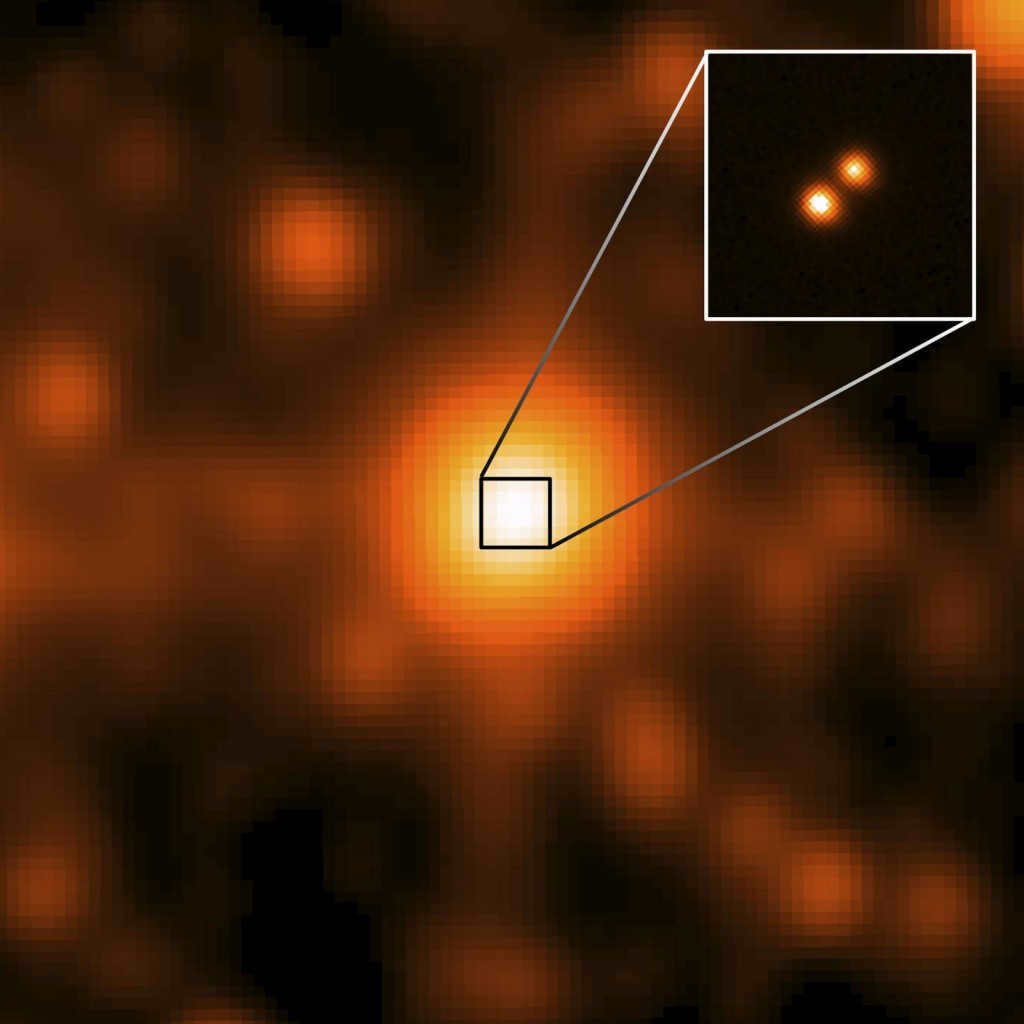
Situated in the Southern Hemisphere, the constellation known as Sails has emerged as a sanctuary for a binary brown dwarf system that stands as the Sun’s closest neighbors. Luman 16, located at a distance of 6.59 light-years, is comprised of two nearly identical elements, each boasting a mass equivalent to 0.4-0.5 times that of the Sun. The system exhibits a rotation period spanning two decades, and no additional celestial bodies have been observed within the vicinity of this binary star system.
If an Earth spacecraft were to embark on a journey to our nearest neighbor, Proxima Centauri, it would require a staggering 70,000 years to complete the voyage.
The separation between the two components of Alpha Centauri, a binary star system, is 22 angular seconds. When observed without any optical aid, the two stars appear merged together, but with even the simplest telescope, they can be seen as separate entities. The angular distance between the two main stars, Centauri A and Centauri B, is not constant and has been observed to change over time. In 2010, the angular distance was measured to be 6.74 seconds, and it is predicted to shrink to 4 seconds by 2016. The maximum value of the angular distance between the two stars will be observed in the year 2056.
Out of the stars that are relatively close to us, only three are classified as first magnitude luminaries: Sirius, Alpha Centauri, and Procyon. Additionally, the closest star to Earth is a red dwarf.
Stars and how they are categorized
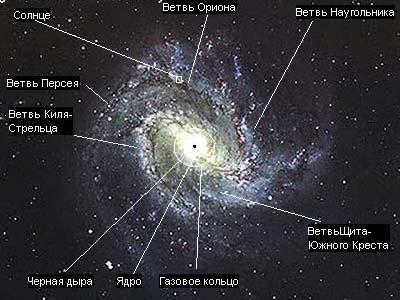
A star is a celestial object that emits a tremendous amount of light and heat. It primarily consists of helium (known by its Latin name, Helium), as well as hydrogen (known by its Latin name, Hydrogenium).
The celestial object maintains a state of balance due to the pressure within its own body and its gravitational force.
It emits heat and light as a result of thermonuclear reactions taking place within its core.
There are different types of stars based on their life cycle and structure:
- Main sequence stars. These are stars in the middle of their life cycle. The Sun is an example of a main sequence star, as are the majority of other stars.
- Brown dwarfs. These are relatively small and dim objects with low temperatures. The first brown dwarf was discovered in 1995.
- A white dwarf is a celestial object that undergoes a shrinking process towards the end of its life cycle, reaching a density that balances the force of gravity. Eventually, it cools down and ceases to emit light.
- A red giant is a massive celestial body that emits a substantial amount of light, despite not being very hot (up to 5000 K).
- New stars do not ignite, it is the old ones that erupt with renewed energy.
- A supernova is similar to a new star, but it emits a large amount of light.
- A hypernova is essentially a supernova, but much larger in size.
- Bright blue variables (LBVs) are the largest and hottest stars.
- Ultra X-ray sources (ULX) emit significant amounts of radiation.
- A neutron star is characterized by rapid rotation and a strong magnetic field.
- A binary star system is unique, consisting of two stars of different sizes.
- Blue stars.
- White-blue stars.
- White stars.
- Yellow-white stars.
- Golden.
- Amber.
- Crimson.
[The majority of stars in the sky are complete systems. What we perceive as one may actually be two, three, five, or even hundreds of bodies within the same system.[/stop]
Star and Constellation Titles
Throughout history, stars have captivated our imagination. They have been the subject of both mystical pursuits (astrology, alchemy) and scientific exploration (astronomy). People have searched for them, studied them, catalogued them, organized them into constellations, and bestowed names upon them. Constellations are groupings of celestial bodies arranged in specific patterns.
Under certain conditions and from various locations on Earth, one can witness up to 6,000 stars in the night sky. While these stars have scientific designations, approximately three hundred of them also possess individual names that have been passed down through ancient times. The majority of star names are of Arabic origin.
The main idea is that while astronomy was advancing worldwide, the Western world was going through a period of decline known as the “dark ages,” causing their progress in the field to lag behind. Mesopotamia made the most advancements during this time, while China made fewer.
The Arabs not only made new discoveries in astronomy, but also gave new names to celestial bodies that already had Latin or Greek names, thus introducing Arabic names into history. However, most constellations still retained their Latin names.
The brightness of a celestial body depends on factors such as the amount of light it emits, its size, and its distance from us. The Sun, despite not being the largest or the brightest star, is the closest to us and therefore appears the brightest.
Among the celestial bodies with the highest brightness, the following are the most prominent:
- Sirius (Alpha Canis Majoris);
- Canopus (Alpha Carinae);
- Toliman (Alpha Centauri);
- Arcturus (Alpha Boötis);
- Vega (Alpha Lyrae).
Naming Periods
Let’s categorize the different periods when individuals assigned names to the celestial bodies.
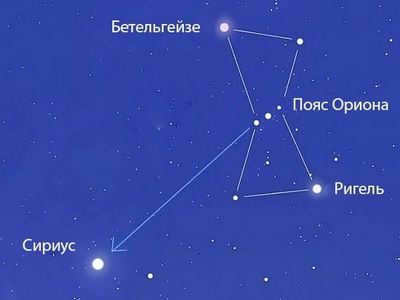
Prehistoric Era
Throughout history, individuals have endeavored to comprehend the celestial sphere, assigning names to the celestial bodies that illuminate the night sky. These designations ranged from animals to inanimate objects and even personal monikers. Though only a mere 20 names have managed to endure from this era, the scholars hailing from Babylon, Egypt, Israel, Assyria, and Mesopotamia made significant contributions in this field.
The Greek Era
The Greeks did not extensively study astronomy. They only assigned names to a few celestial bodies, mostly using names from constellations or preexisting names. The Greek scientist Ptolemy Claudius (1st-3rd century) collected all the astronomical knowledge of ancient Greece and Babylon in his works “Almagest” and “Tetrabiblos.”
“Almagest” (The Great Construction) is Ptolemy’s thirteen-book work, in which he attempts to explain the structure of the universe based on the research of Hipparchus of Nicaea (c. 140 BC). Ptolemy also provides a list of names for some of the brightest constellations.
Below is a table of the celestial bodies described in the Almagest:
| Name of stars | Name of constellations | Description, location |
| Sirius | Canis Major | Located in the mouth of the Canis Major constellation. It is also known as the Dog Star. It is the brightest star in the night sky |
| Procyon | Canis Minor | Positioned on hind legs |
| Arcturus | Boötes | Doesn’t conform to the pattern of Boötes. It is located below it. |
| Regulus | Leo | Located in the heart of the Leo constellation. Also known as the Royal Star |
| Spica | Virgo | On the left hand. It also has another name, Colossus |
| Antares | Scorpius | Located in the middle of the Scorpius constellation |
| Vega | Lyra | Located on the shell. Another name for it is Alpha Lyrae |
| Capella | Auriga | On the left shoulder. Also known as the Goat Star |
| Canopus | Carina | Located on the keel of the Argo Navis constellation |
Tetrabiblos – another piece of work by Ptolemy Claudius consisting of four books. This is where the list of heavenly bodies is finalized.
Roman era
The Roman Empire was actively involved in the exploration of astronomy, however, just as this field of study began to flourish, Rome experienced a downfall. Consequently, the scientific advancements made by the empire also declined. Nevertheless, approximately one hundred stars have been assigned Latin names, although it cannot be guaranteed that these names were bestowed upon them by Roman scholars.
Arab period
One of the key contributions to the field of astronomy during the Arab period was the study of Ptolemy Almagest. The Arabs took the initiative to translate some of his works into Arabic. Reflecting their religious beliefs, they made changes to the names of certain celestial bodies. These names were often chosen based on the body’s position within a constellation, with many of them containing references to the neck, leg, or tail.
Below is a table showcasing some Arabic names:
| Arabic name | Meaning | Stars with Arabic names | Constellation |
| Ras | Head | Alpha of Hercules | Hercules |
| Algenib | Bock | Alpha of Perseus, Gamma of Perseus | Perseus |
| Menkib | Shoulder | Alpha Orion, Alpha Pegasus, Beta Pegasus, Beta Ascendant, Zeta Perseus, Phyta Centauri. | Pegasus, Perseus, Orion, Centauri, Ascendant |
| Rigel. | Leg | Alpha Centauri, Beta Orion, Mu Virgo. | Centaurus, Orion, Virgo |
| Rukba | Knee | Alpha Sagittarius, Delta Cassiopeia, Ipsilon Cassiopeia, Omega Swan | Sagittarius, Cassiopeia, Swan |
| Sheath | Cephalus | Beta Pegasus, Delta Aquarius. | Pegasus, Aquarius |
| Mirfak | Elbow | Alpha Perseus, Capa Hercules, Lambda Serpens, Phita and Mu Cassiopeia | Perseus, Serpentor, Cassiopeia, Hercules. |
| Menkar. | Nose | Alpha of the Whale, Lambda of the Whale, Epsilon of the Raven | Whale, Raven |
| Markab | That which moves | Alpha Pegasus, Tau Pegasus, Capa Sails. | Argo’s ship, Pegasus. |
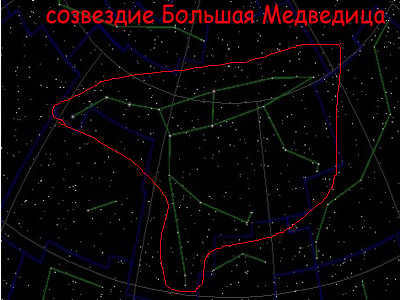
In Europe during the 16th century, there was a resurgence of antiquity, which also brought about advancements in science. While the Arabic names remained the same, there was a frequent occurrence of Arabic-Latin hybrids.
Although new celestial bodies were rarely discovered during this time, existing ones were supplemented with additional objects. A significant milestone during this period was the release of the star atlas “Uranometria”.
The atlas was compiled by the amateur astronomer Johann Bayer in 1603. Bayer included artistic depictions of the constellations in the atlas.
One of the most significant contributions he made was suggesting a method for naming the stars using the letters of the Greek alphabet. According to his proposal, the brightest star in a constellation would be designated as “Alpha”, the next brightest as “Beta”, and so on, all the way to “Omega”. As an example, the brightest star in the constellation Scorpio would be called Alpha Scorpio, the second brightest would be Beta Scorpio, followed by Gamma Scorpio, and so forth.
Our era
Thanks to the development of advanced telescopes, we have been able to uncover a vast array of celestial objects. Rather than being assigned poetic names, these objects are now labeled with a combination of numerical and alphabetical codes. However, there are instances where celestial bodies are given names. In these cases, they are typically named after the scientists who discovered them. Nowadays, there is even the option to purchase the privilege of naming a celestial object according to personal preference.
[The Sun does not belong to any specific constellation.
Understanding the Nature of Constellations
Initially, constellations were created by connecting bright stars to form recognizable shapes. Today, these formations serve as important reference points for astronomers studying the night sky.
Here is a list of constellations arranged alphabetically:
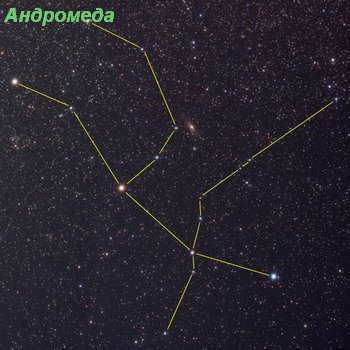
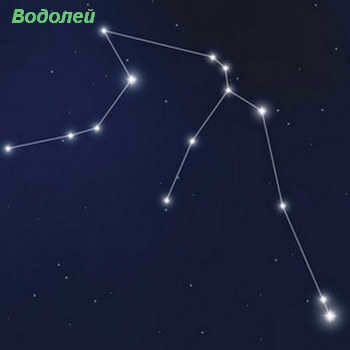
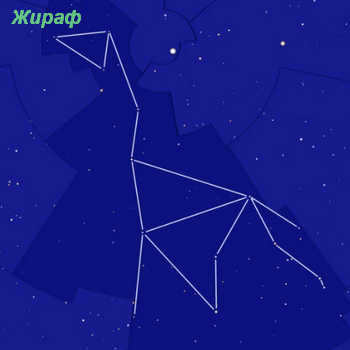
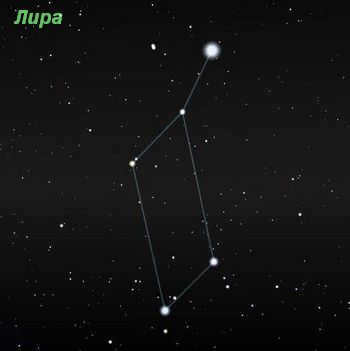
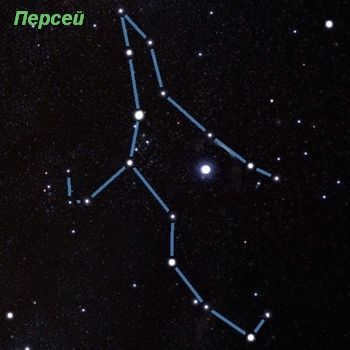
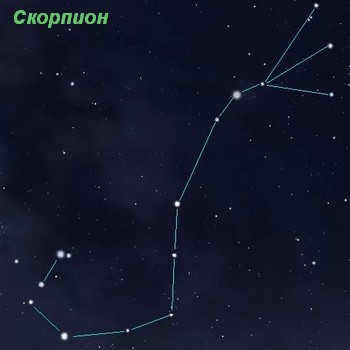
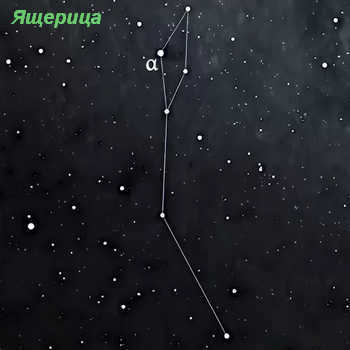
- Situated in the northern part of the celestial sphere.
- The Ursa Major. Consists of seven stars that form the shape of a dipper.
- The Canis Major. Features the brightest star in the night sky, Sirius.
- The Libra. A zodiacal constellation with a total of 83 stars.
- The Aquarius. Another zodiacal constellation, characterized by an asterism that resembles a pitcher.
- The Ascendant. Its most notable celestial object is Capella.
- The Lupus. Situated in the southern hemisphere.
- The Boötes. Its brightest star is Arcturus.
- Veronica’s Hair. Comprises 64 visible objects.
- The Corvus. Can be best observed in the middle latitudes.
- The Hercules. Contains a total of 235 visible stars.
- The Hydra. Alphard is its most significant luminary.
- The Columba. A constellation with 71 stars, located in the southern hemisphere.
- The Canes Venatici. Consists of 57 visible objects.
- The Virgo. A zodiacal constellation with the brightest celestial body, Spica.
- The Delphinus. Visible everywhere except Antarctica.
- Dragon. Found in the northern hemisphere, almost at the pole.
- Unicorn. Situated along the milky way.
- The Altar. Contains 60 stars that are visible.
- Painter. Consists of 49 celestial objects.
- Giraffe. Faintly visible in the northern hemisphere.
- Crane. The brightest star in this constellation is Alnair.
- Hare. Comprised of 72 celestial bodies.
- Serpentine. Known as the 13th sign of the zodiac, but not included in this list.
- Snake. Contains 106 luminaries.
- Goldfish. Consists of 32 stars that can be seen with the naked eye.
- Indian. A faintly visible constellation.
- Cassiopeia. Resembles the letter “W”.
- Keel. Comprised of 206 objects.
- Whale. Located in the “water” region of the sky.
- Capricorn. The zodiacal constellation of the southern hemisphere.
- Compass. Contains 43 visible stars.
- Corma. Situated along the milky way.
- Located in the northern part, there is the Swan.
- Leo is a zodiacal constellation found in the northern part.
- There are 31 objects known as the Flying fish.
- Lyra is known for being the brightest luminary, with Vega as its main star.
- Foxy is a dim constellation.
- The Little Dipper is located above the north pole and contains Polaris.
- The Lesser Horse consists of 14 luminaries.
- The Lesser Hound is a bright constellation.
- The Microscope can be found in the southern part of the sky.
- The Fly is located on the equator.
- The Pump can be seen in the southern sky.
- The Naugol passes through the Milky Way.
- Aries is a zodiacal constellation with the bodies of Mezarthim, Hamal, and Sheratan.
- The Octant can be found at the south pole.
- The Eagle is located at the equator.
- Orion is known for its bright object, Rigel.
- The Peacock is found in the southern hemisphere.
- The Sails consist of 195 stars in the southern hemisphere.
- Pegasus. Situated to the south of Andromeda, Pegasus is known for its two brightest stars, Markab and Enif.
- Perseus. Initially discovered by Ptolemy, the first object in Perseus is Mirfak.
- Furnace.
- Bird of Paradise. Located near the southern pole, this constellation is a sight to behold.
- Cancer. As a zodiacal constellation, Cancer is faintly visible in the night sky.
- The incisor. Found in the southern part of the sky, this constellation has a unique shape.
- Pisces. Divided into two parts, Pisces is a large constellation with 92 visible stars.
- Pisces. With a stunning array of 92 visible stars, Pisces is a notable constellation.
- Northern Crown. Resembling the shape of a crown, this constellation is a captivating sight.
- Sextant. Situated on the equator, Sextant is an interesting constellation to observe.
- Grid. Consisting of 22 objects, the Grid constellation offers a unique celestial display.
- Scorpio. The first luminary in Scorpio is the bright star Antares.
- Sculptor. With a total of 55 celestial bodies, Sculptor is a constellation worth exploring.
- Sagittarius. As a zodiacal constellation, Sagittarius is a prominent feature in the night sky.
- Taurus. Another zodiacal constellation, Taurus is known for its brightest object, Aldebaran.
- Triangle. With 25 stars, Triangle is a small but fascinating constellation to observe.
- Toucan. This constellation is home to the Small Magellanic Cloud, a captivating celestial object.
- Phoenix. With a total of 63 stars, Phoenix is a constellation that offers a mesmerizing display.
- Chameleon. It is small and not very bright.
- Centauri. The closest star to the Sun for us is Proxima Centauri, which is also the brightest.
- Cepheus. This constellation has a triangular shape.
- Circulus. It is located near Alpha Centauri.
- Clock. This constellation has an elongated shape.
- Shield. It is located near the equator.
- Eridanus. This is a large constellation.
- Southern Hydra. It consists of 32 celestial bodies.
- Southern Corona. This constellation is faintly visible.
- Southern Fish. It contains 43 objects.
- Southern Cross. This constellation is shaped like a cross.
- Southern Triangle.
- Lizard. There are no bright objects in this constellation.
Zodiacal constellations
The constellations that the Earth passes through during the year, forming a symbolic ring around the system, are known as the zodiac signs. There are 12 officially recognized zodiac signs, although the Serpentine, although not officially recognized as a zodiac sign, is also located within this ring.
In reality, there are no distinct shapes made up of celestial bodies. When we look at the sky, we perceive it as a two-dimensional plane. However, the celestial bodies are actually located in three-dimensional space, at varying distances from each other. They do not form any specific pattern.
For example, it takes approximately 4.3 years for light from Proxima Centauri, the closest star to the Sun, to reach us. On the other hand, light from another object in the same star system, Omega Centauri, takes approximately 16,000 years to reach Earth. All divisions and measurements are arbitrary and symbolic.
Below is a video that can help you learn the names of stars and constellations:
Counting the precise number of celestial luminaries in the universe is an impossible task. It is a daunting challenge to even come close to determining an exact figure. Stars congregate and form galaxies, with our very own Milky Way galaxy boasting a staggering count of approximately 100,000,000,000,000,000,000. From our vantage point on Earth, the most advanced telescopes have detected around 55,000,000,000,000,000,000 galaxies. Thanks to the Hubble telescope, which orbits our planet, scientists have unveiled about 125,000,000,000,000,000 galaxies, each of which houses billions, if not hundreds of billions, of stars and other celestial objects. It becomes evident that the universe harbors at least a trillion trillion trillion luminaries, though this represents only a small fraction of the true count.
The Moon is Earth’s nearest celestial object. When we observe it over the course of a month, we can observe that its appearance gradually transitions from a complete disk to a thin crescent shape. The Moon does not emit its own light; it reflects light from the Sun. Depending on its position relative to the Earth and the Sun, we perceive the Moon as either a full Moon (full moon), half of the visible disk (first or last quarter), or not visible at all (new moon).
When the Earth, Moon, and Sun are aligned in a straight line, with the Moon positioned between the Earth and the Sun, the unilluminated portion of the lunar surface faces the Earth, making it invisible. This phase is known as the new moon or the Moon’s “birth.” During the new moon, a faint glow can still be observed on the unlit part of the Moon against the dark sky. This phenomenon is referred to as the ashy light of the Moon. Leonardo da Vinci accurately explained this occurrence, attributing it to the reflection of sunlight off the Earth, which is directed towards the Moon’s sunlit hemisphere during this time.
A week following the occurrence of the new moon, the boundary between the illuminated and dark portions of the lunar disk, known as the terminator, appears as a straight line when viewed from Earth. This illuminated section of the moon is referred to as the first quarter. Moving forward two weeks from the new moon, the Moon once again aligns with the line connecting the Sun and the Earth, but is now on the opposite side of the Earth. The weather is misty, and the moon is in its full phase. The new moon and full moon are collectively known as the “blue” phases. Three weeks after the new moon, we once again witness exactly half of the Moon’s disk illuminated. This phase is called the last quarter.
II. Synodic and sidereal periods of the Moon’s orbit
The synodic month, also known as the period of time between successive identical phases of the Moon, is approximately 29.5 days. This term is derived from the Greek word “Synodos,” which means conjunction. It refers to the Moon’s orbit around the Earth in relation to the sun.
On the other hand, the sidereal month, or sideric month, is the period of the Moon’s orbit around the Earth relative to the stars. It lasts for about 27.3 days and is named after the Latin word “Sidus,” which means star. It is important to note that the synodic month is longer than the sidereal month. This difference can be easily understood by considering that the same phases of the Moon occur at the same positions relative to the Earth and the Sun.
We always observe only one side of the Moon, which can be misleading as it may seem like the Moon doesn’t rotate on its axis. However, this is actually because the Moon’s axial rotation and its revolution around the Earth have the same period.
III. Lunar and Solar Eclipses
Solar eclipses have long been a source of fear and fascination for superstitious individuals, as they are closely linked to the Moon’s movement around the Earth. Both the Earth and the Moon are solid objects that cast shadows. When the Moon aligns itself between the Earth and the Sun during its orbit, it obstructs the Sun’s light and casts its shadow onto the Earth’s surface. This captivating phenomenon occurs due to a fortunate coincidence: the Moon is positioned at a distance from us that is precisely the right ratio to its smaller size compared to the Sun. As a result, the apparent sizes of the Sun and Moon when viewed from Earth are identical. Consequently, the Moon, being closer to us than the Sun, has the ability to completely obscure our daylight and create a total solar eclipse. During this time, the Moon’s shadow covers a small portion of the Earth’s surface, allowing for the observation of a total solar eclipse within a limited area. It is important to note that a total solar eclipse can only occur during a new moon phase. As the Earth rotates on its axis and the Moon orbits around it, the Moon’s shadow traverses the Earth’s surface, causing the occurrence of a total solar eclipse to shift from one location to another. However, the duration of a total solar eclipse in each location does not exceed 7.5 minutes.
However, there is a possibility that the Earth is positioned between the Moon and the Sun, resulting in the Moon entering the Earth’s shadow. When this occurs, it is known as a lunar eclipse. This type of eclipse can only happen during a full moon. The lunar eclipse is visible from any location on Earth that is facing the Moon during this time. Due to the Earth’s shadow being 2.5 times larger than the diameter of the Moon, the lunar eclipse can last for more than three hours.
As the Moon continues its journey, it moves through various constellations, which are part of the zodiac. One might assume that the Moon’s orbit and the Earth’s orbit align each month, with the solar eclipse occurring during the new moon and the lunar eclipse taking place during the full moon. However, this is not always the case. What is causing this discrepancy?
What needs to be emphasized is that the orbit of the moon does not align with the ecliptic plane, but is inclined at a 5-degree angle. Although the inclination is small, it plays a significant role in lunar events. During a full moon, the moon can slip under the Earth’s shadow, while during a new moon, the shadow of the moon can pass over the Earth’s north or south pole (Fig. 4).
Due to this misalignment, it is rare for the moon, Earth, and Sun to be perfectly aligned, resulting in infrequent eclipses. Typically, there are four eclipses: two lunar and two solar. A crucial discovery was made in ancient times – the realization that eclipses repeat themselves. Scientists have even calculated the recurrence period, which is 6585.3 days. They named this number “saros,” which means “repetition” in Egyptian.
| Witnessing a solar eclipse is an awe-inspiring experience. When the Moon obscures the radiant solar disk, a mesmerizing pearly-silver glow emerges around the diminishing Sun. Additionally, the Sun is enveloped by a vibrant orange-red ring adorned with protrusions filled with fiery tongues, commonly known as the solar corona. This captivating phenomenon showcases the luminous atmosphere of the Sun. |
Lunar eclipses, on the other hand, offer a lengthier spectacle, allowing observers to observe the Earth’s shadow in various shades. Interestingly, certain rays of sunlight, as they pass through the Earth’s atmosphere, are refracted and penetrate inside the Earth’s shadow cone. Consequently, during a total lunar eclipse, the shadow cast on the Moon takes on a distinctive hue of red-brown, adding to the visual allure of this celestial event.
IV. The Moon: Earth’s Natural Satellite
Poets throughout history have been captivated by the beauty of the full Moon. One cannot forget the renowned words of Pushkin:
Even when observed with the unaided eye, the Moon reveals vast dark regions (known as seas, covering around 30% of its surface) as well as bright areas resembling continents. One distinctive trait of the lunar soil is the presence of circular craters. On the Moon, the central portion of the crater, also referred to as a “circular plain,” is situated lower than the surrounding landscape. On our planet, however, the interior of a crater forms the peak of a mountain.
When creating maps of the moon, various features of the lunar landscape were assigned unique names. Mountain ranges were named after terrestrial mountain systems, while craters were named after astronomers, mathematicians, and physicists. Notable examples include the Ocean of Storms, the Sea of Rains, and the Sea of Tranquility, which appeared on lunar maps. On the far side of the moon, which is hidden from Earth, there are primarily continents. The Sea of Moscow, for instance, has an average diameter of 460 kilometers, making it one of the largest lunar seas. Additionally, there are sea-like formations that are round or oval in shape, occupying an intermediate position between seas and the largest craters. The back side of the moon is also home to numerous craters, many of which have been named after distinguished scientists such as Lomonosov, Giordano Bruno, and Tsiolkovsky.
The XII century saw the creation of the initial map of the Moon’s far side and the first globe by Russian astronomers. A significant breakthrough occurred in 1959 when the Luna-3 station successfully orbited the Moon and captured images of its previously unexplored side. The photographic documentation of the far side was fully completed by 1965. The successful delivery of lunar soil samples to Earth proved to be of immense importance in unraveling the mysteries of the Moon. On July 20, 1965, American astronaut Armstrong made history by becoming the first person to set foot on the Moon’s surface, stepping into a completely unfamiliar and uninhabited world. The discovery of basalt-covered seas on the lunar surface shed new light on the nature of the Moon. Furthermore, it was revealed that the continental rocks were older than the marine rocks.





